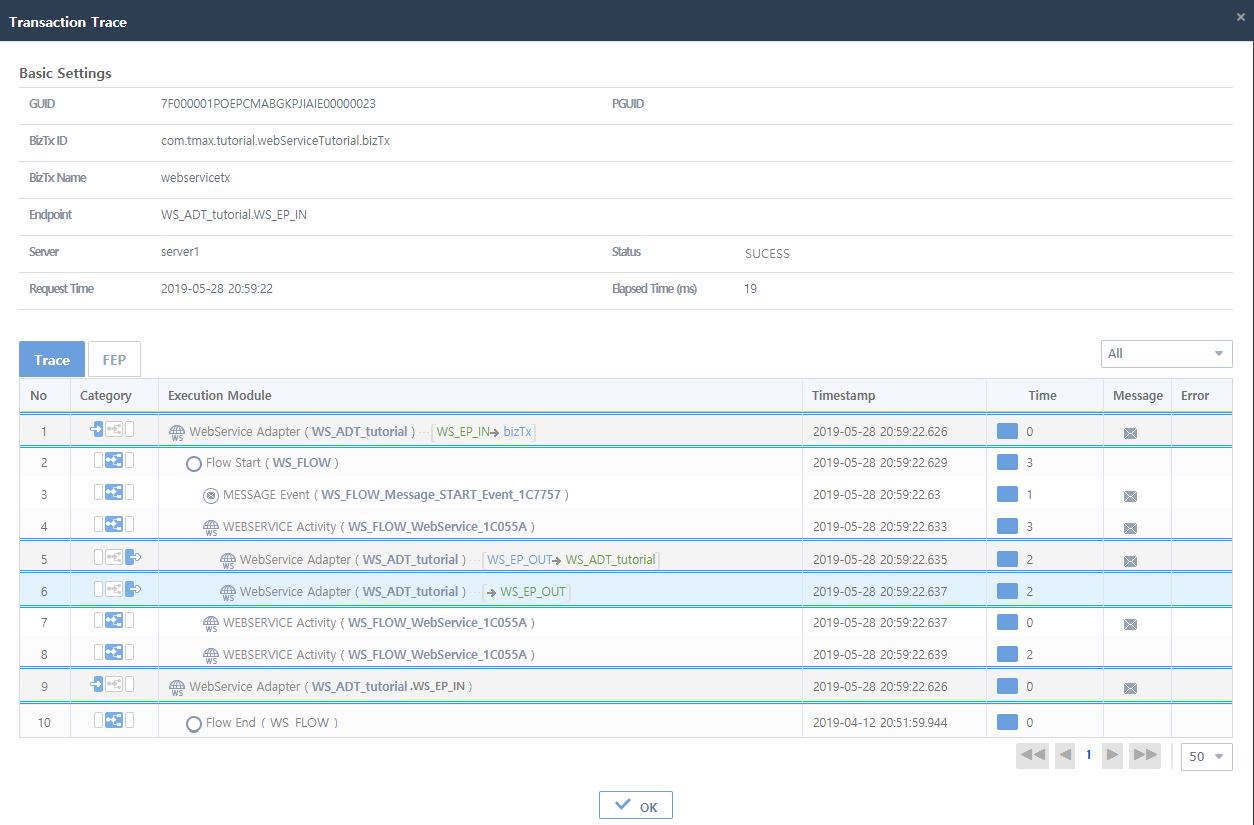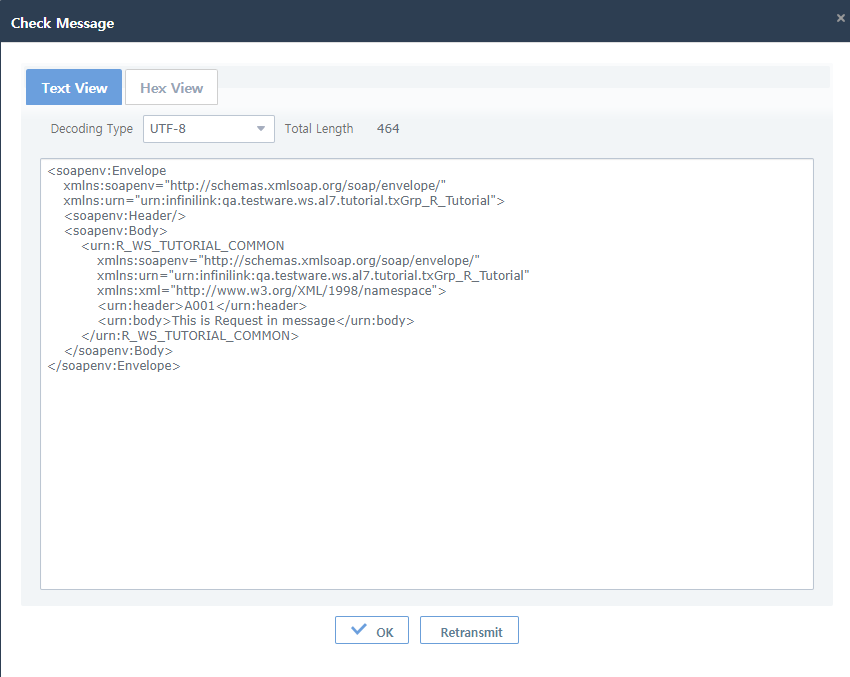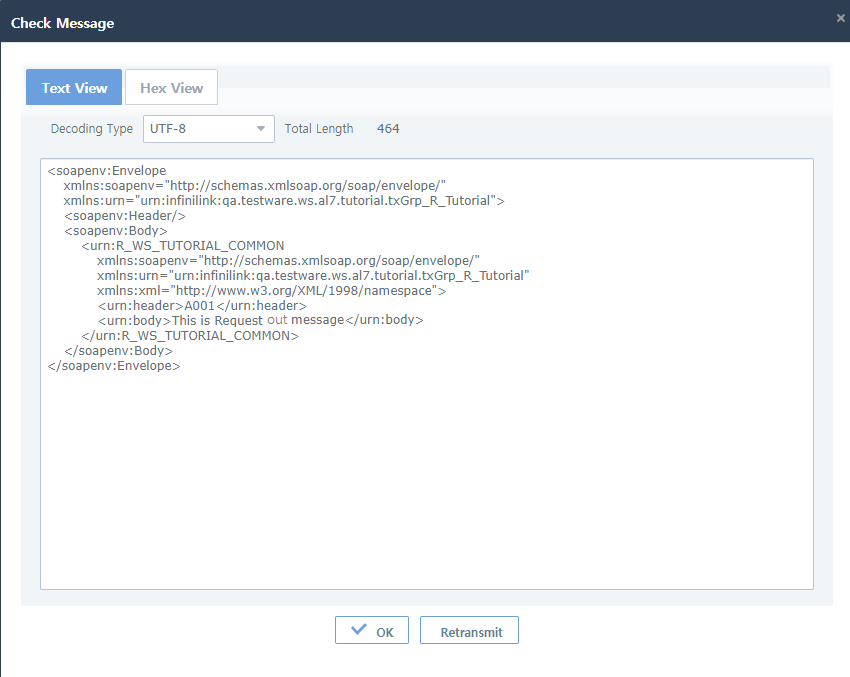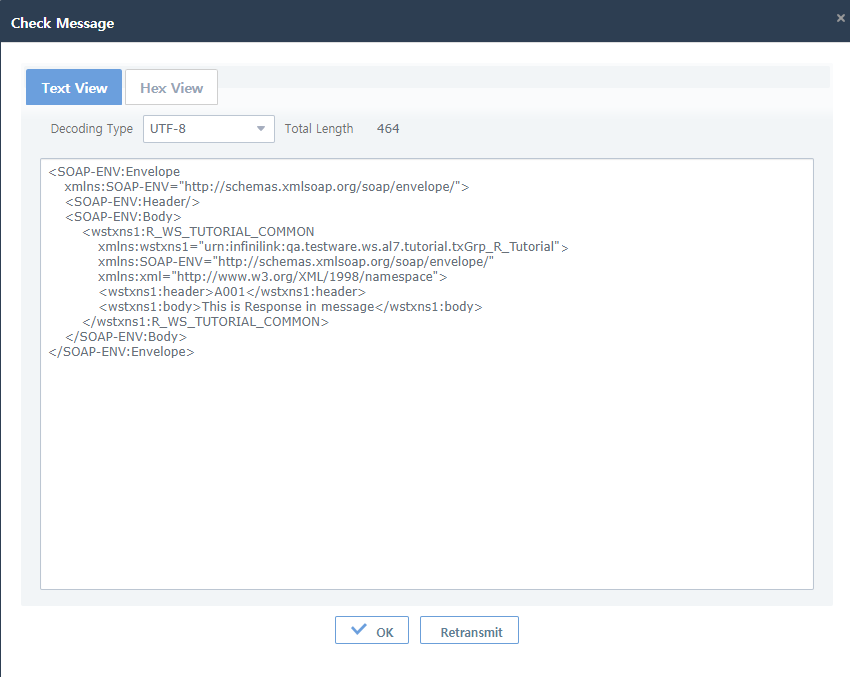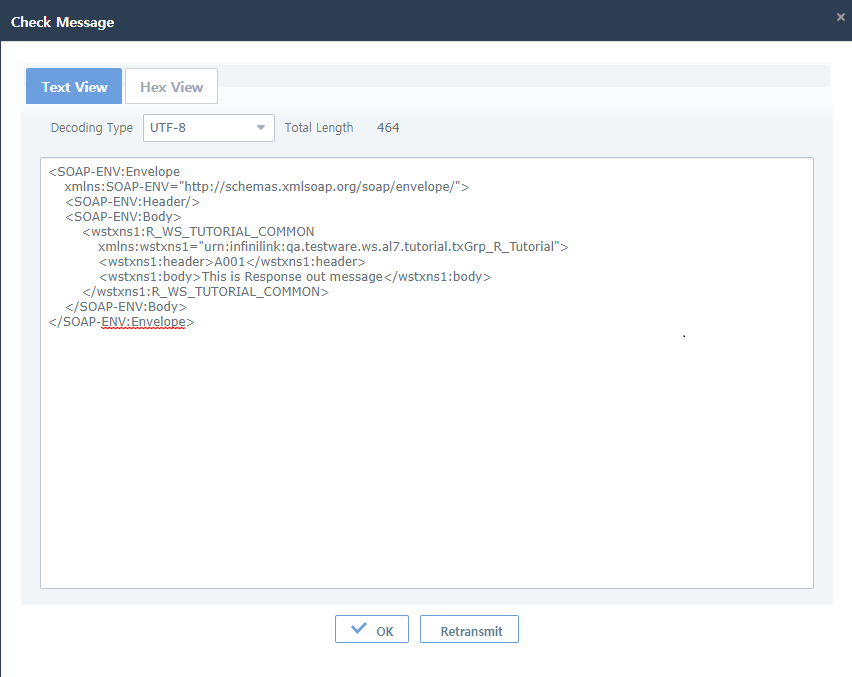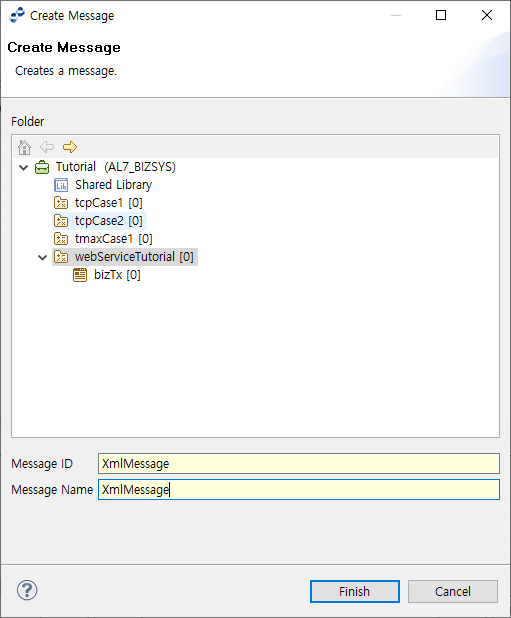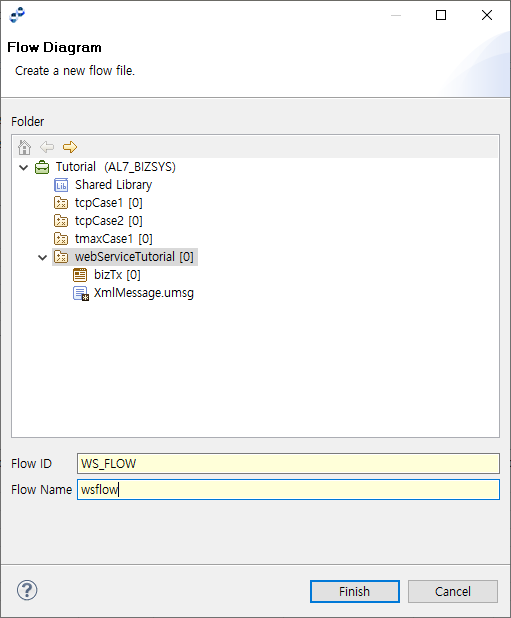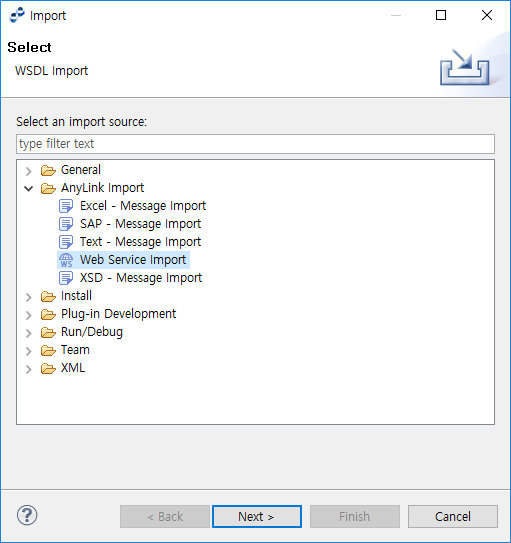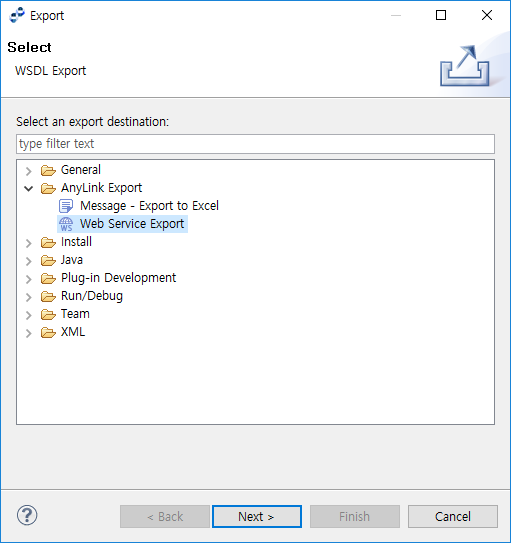Examples
This chapter describes examples of using AnyLink Web Service adapter.
1. Overview
All used messages use the XML format.
The following shows the basic Web Service BizTx process.
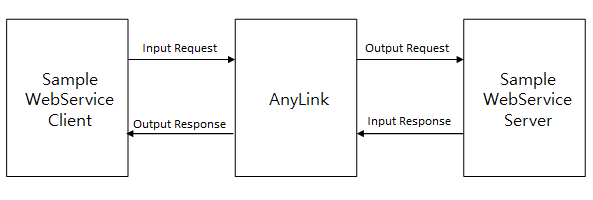
A BizTx is processed as follows:
-
A request input message is sent via a sample Web Service client.
-
AnyLink receives the message via an inbound adapter and then executes a service flow.
-
The service flow maps the request input message to the request output message.
-
The request output message is sent to the sample Web Service server via an outbound adapter.
-
The sample Web Service server sends the response input message.
-
The service flow maps the response input message to the response output message.
-
The response output message is sent to the sample Web Service client via an inbound adapter.
2. Creating an Adapter
Log in to AnyLink WebAdmin through a web browser, go to [System] > [Adapter], and click [Add] below the Adapter List to go to the Add Adapter screen. For information about creating an adapter, refer to Adapter Configuration. For information about accessing and creating business systems in AnyLink WebAdmin, refer to AnyLink WebAdmin Guide.
2.1. Creating an Adapter
The following is an example of creating a Web Service adapter.

-
Basic Settings
Item Value Adapter ID
WS_ADT_Tutorial
Adapter Name
WS_ADT_Tutorial
Adapter Type
WebService
Biz System Name
AL7_BIZSYS
-
[Advanced Settings] Tab
Item Value Outbound Thread Pool ID
No
3. Creating an Endpoint
From the [Adapter] screen, click on an adapter and go to the Adapter Details screen. Click [Add] from the [Endpoint List] tab to go to the Add Web Service Endpoint screen. For more information about creating an endpoint, refer to Endpoint Configuration.
3.1. Creating an Inbound Endpoint
The following is an example of creating a Web Service inbound endpoint.
-
Basic Settings
 Adding an Inbound Endpoint - Basic Settings
Adding an Inbound Endpoint - Basic SettingsItem Value Endpoint ID
WS_EP_IN
Endpoint Name
WS_EP_IN
Endpoint Status
Running
Initial State at Boot
Running
Direction
Inbound
-
[Connection Info] Tab
 Adding an Inbound Endpoint - [Connection Info]
Adding an Inbound Endpoint - [Connection Info]Item Value WSDL
ib_bizTx.wsdl (Enter the WSDL file name of the inbound BizTx created in Studio.)
context-path
/tutorial
URL
/ws_tutorial_biztx
Binding Type
SOAP
-
[Advanced Settings] Tab
 Adding an Inbound Endpoint - [Advanced Settings]
Adding an Inbound Endpoint - [Advanced Settings]Item Value BizTx Group/BizTx
com.tmax.tutorial.webServiceTutorial (This item can be entered manually or can be selected after creating BizTx Group/BizTx from the BizTx Group/BizTx screen.)
3.2. Creating an Outbound Endpoint
The following is an example of adding a Web Service outbound endpoint.
-
Basic Settings
 Adding an Outbound Endpoint - Basic Settings
Adding an Outbound Endpoint - Basic SettingsItem Value Endpoint ID
WS_EP_OUT
Endpoint Name
WS_EP_OUT
Endpoint Status
Running
Initial State at Boot
Running
Direction
Outbound
Description
webservice outbound endpoint
-
[Connection Info] Tab
 Adding an Outbound Endpoint - [Connection Info]
Adding an Outbound Endpoint - [Connection Info]Item Value Default Encoding
N/A
Host Variable
N/A
Port Variable
N/A
Message Header
N/A
4. Creating a Studio Resource
This section describes how to create a resource in Studio. For information about AnyLink Studio, refer to AnyLink Studio Guide.
4.1. Creating a BizTx Group
In the BizTx Group navigator, right click on a Project and go to [New] > [BizTx/BizTx Group].
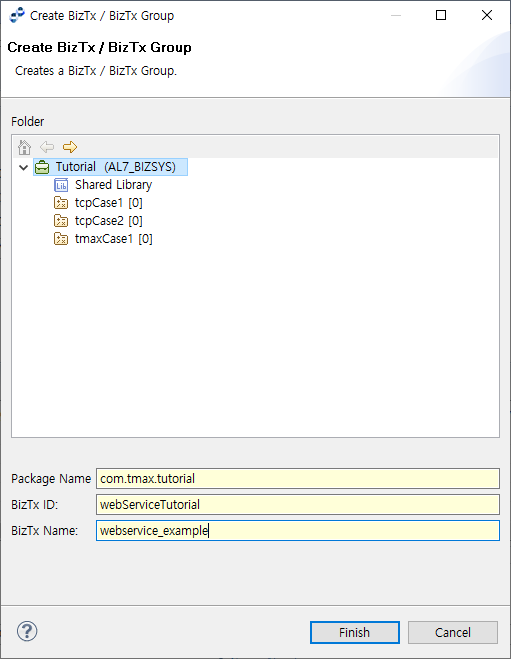
| Item | Value |
|---|---|
Package Name |
com.tmax.tutorial |
BizTx ID |
webServiceTutorial |
BizTx Name |
webservice_example |
4.2. Creating a BizTx
In the BizTx Group navigator, right click on a BizTx Group and go to [New] > [BizTx/BizTx Group].
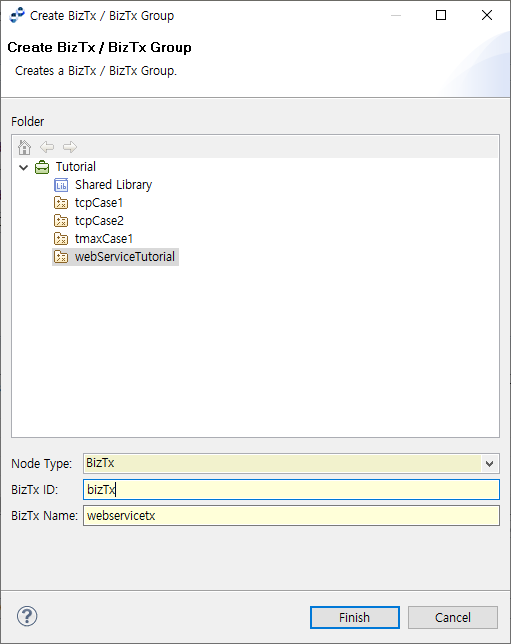
| Item | Value |
|---|---|
Node Type |
BizTx |
BizTx ID |
bizTx |
BizTx Name |
webservicetx |
5. Importing a Web Service
This section describes how to configure an outbound Web Service by using a function for importing Web Services. For more information, refer to Importing & Exporting WSDL.
Import a Web Service as follows.
-
In the BizTx Group navigator, right click on a BizTx and go to [Import].
-
Select [Import Web Service] in the [AnyLink Import] menu.
-
Import a WSDL by entering the WSDL file path which exists in the local file system, or by entering the URL. Select an outbound type since an outbound service needs to be imported.
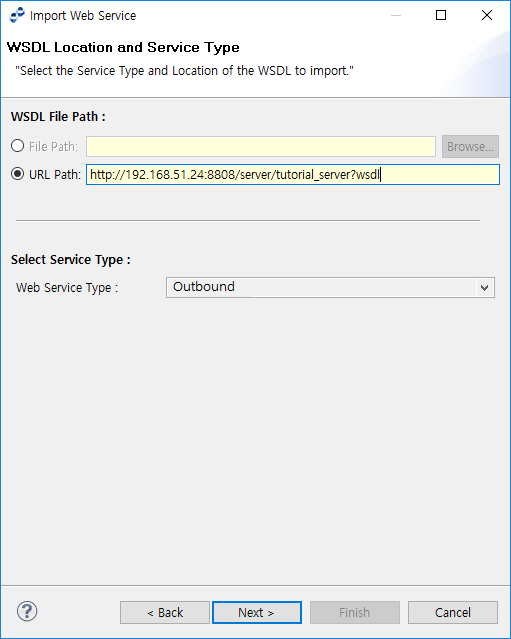 Importing a Web Service (2)
Importing a Web Service (2)A WSDL file can be imported by configuring the server URL in the following format.
{$IP}:{$PORT}/{$CONTEXT_PATH}/{$URL}?wsdl -
Select a path for resources to be created by using "Import Web Service".
 Importing a Web Service (3)
Importing a Web Service (3) -
The resources will be created as follows.
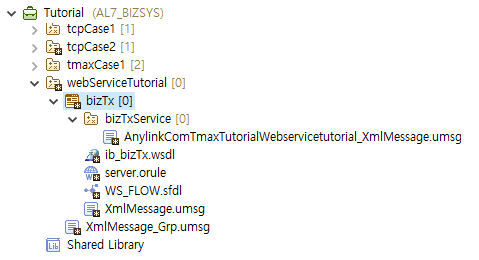 Result of Importing a Web Service
Result of Importing a Web Service -
Configure an endpoint by selecting a Web Service outbound rule.
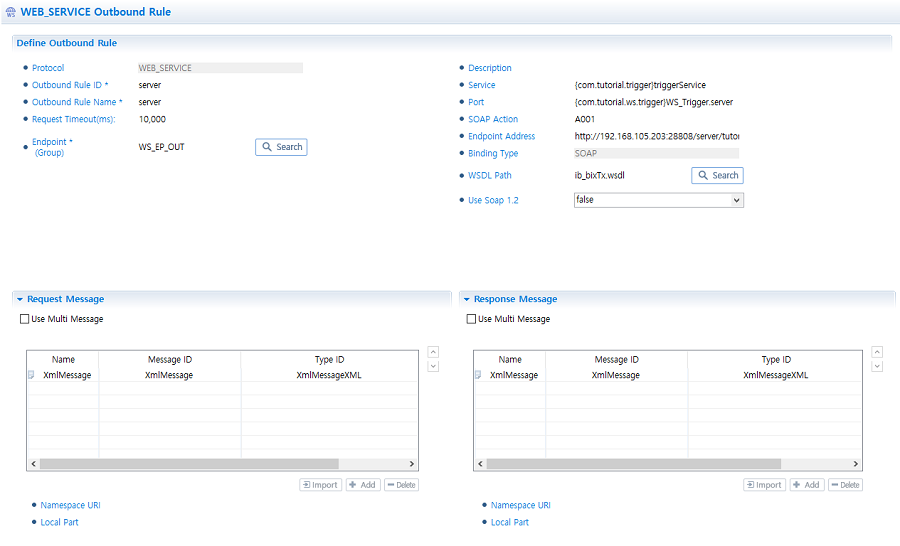 Web Service Outbound Rule
Web Service Outbound Rule
6. Configuring a Studio Resource
This section describes how to configure a resource. For more information about AnyLink Studio, refer to AnyLink Studio Guide.
6.1. Configuring a BizTx Group
The following is an example of configuring a BizTx Group. The [Parsing Info] tab and the [Parsing Options] tab are not configured in this example.
-
[BizTx Group Info] Tab
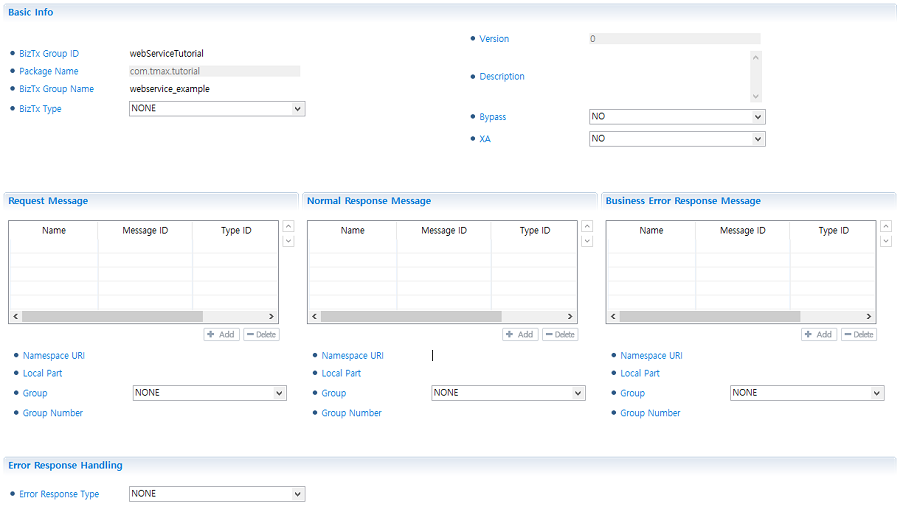 Configuring a BizTx Group - [BizTx Group Info]
Configuring a BizTx Group - [BizTx Group Info]Item Value Request Message
None
Normal Response Message
None
Bypass
NO
XA
NO
Error Response Type
NONE
-
[BizTx Group Option] Tab
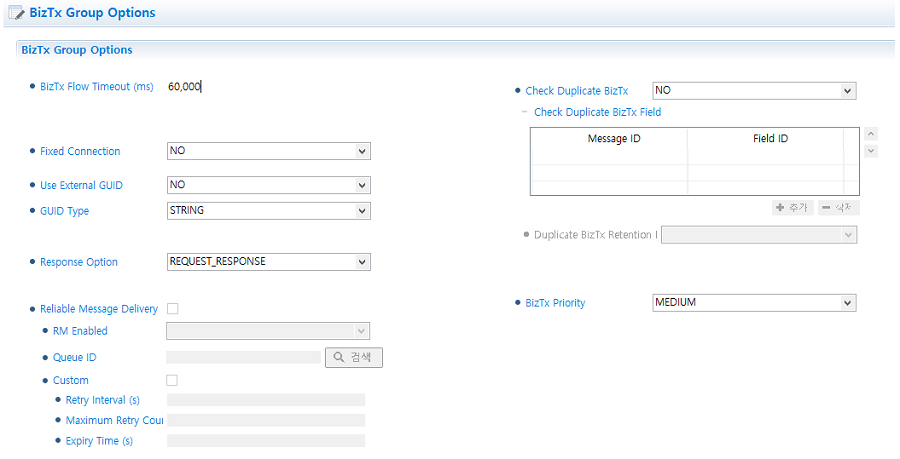 Configuring a BizTx Group - [BizTx Group Option]
Configuring a BizTx Group - [BizTx Group Option]Item Value BizTx Flow Timeout (ms)
60000
Response Option
REQUEST_RESPONSE
BizTx Priority
MEDIUM
6.2. Configuring a BizTx
The following is an example of configuring a BizTx. The [Parsing Info] tab and the [Parsing Options] tab are not configured in this example.
-
[BizTx Info] Tab
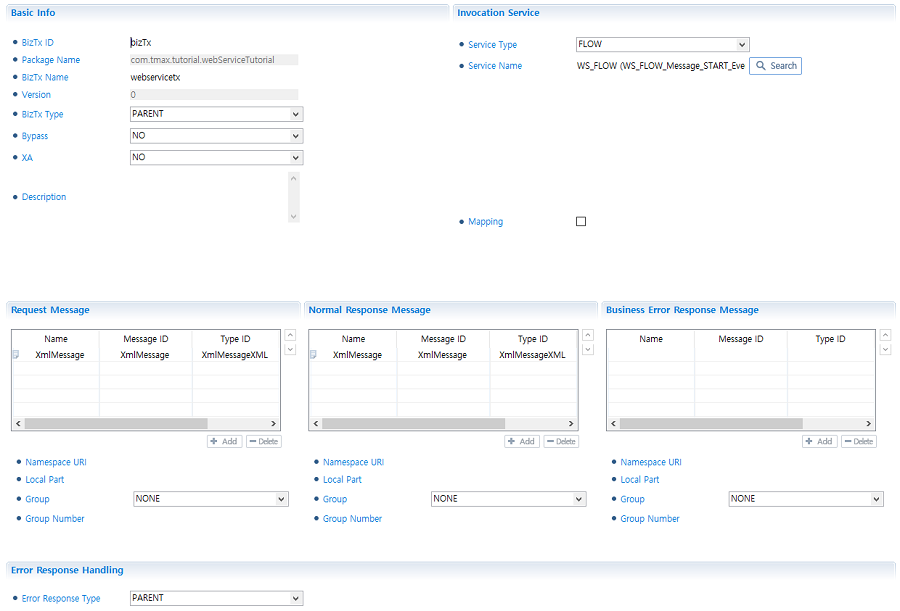 Configuring a BizTx - [BizTx Info]
Configuring a BizTx - [BizTx Info]Item Value Request Message
XmlMessage
Normal Response Message
XmlMessage
Bypass
NO
XA
NO
Error Response Type
PARENT
Service Type
FLOW
Service Name
WS_FLOW (WS_FLOW_Message_STRT_Event_011D39) (randomly generated)
-
[BizTx Options] Tab
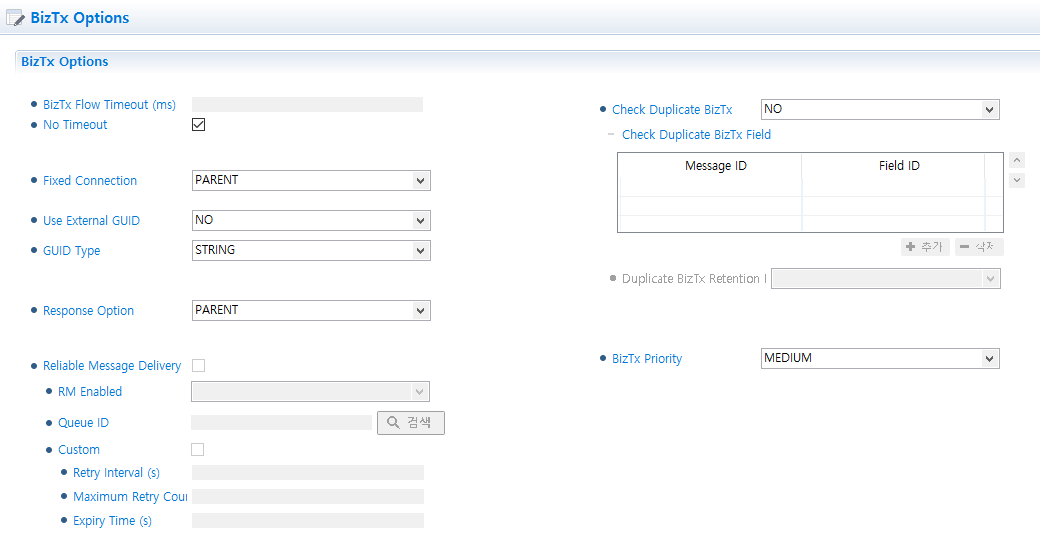 Configuring a BizTx - [BizTx Options]
Configuring a BizTx - [BizTx Options]Item Value BizTx Flow Timeout (ms)
None
No Timeout
Yes
Response Option
PARENT
BizTx Priority
MEDIUM
6.3. Configuring a Message
For information about how to configure messages, refer to AnyLink Studio Guide.
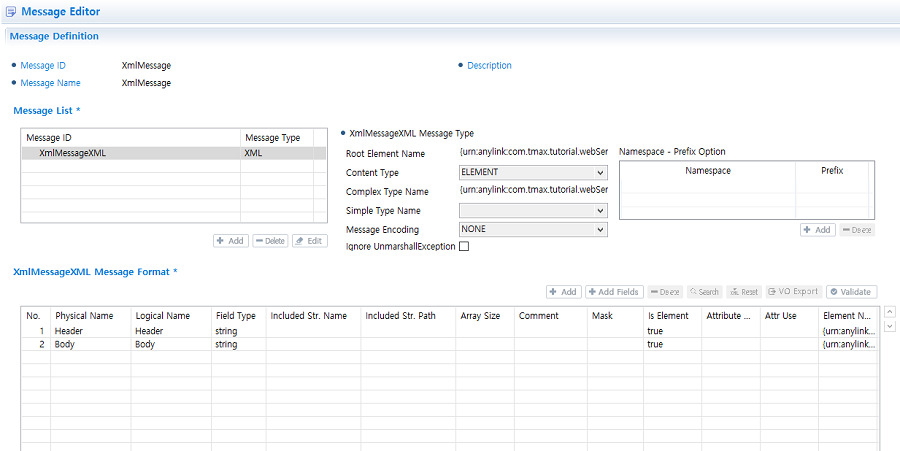
| Item | Value |
|---|---|
Message Type |
XML |
Field 1 |
Header |
Field 2 |
Body |
6.4. Configuring an Outbound Rule
Outbound rules are configured in Importing a Web Service so no additional configuration is necessary.
6.5. Configuring a Flow
Configure a flow as follows:
-
Create a flow diagram
-
Configure variables
-
Configure message events
-
Configure outbound service call
-
Configure response service call
Flow Diagram
The following is an example of creating a service flow diagram.

Variables
To set variables, click [Properties] from the context menu of the Flow editor.
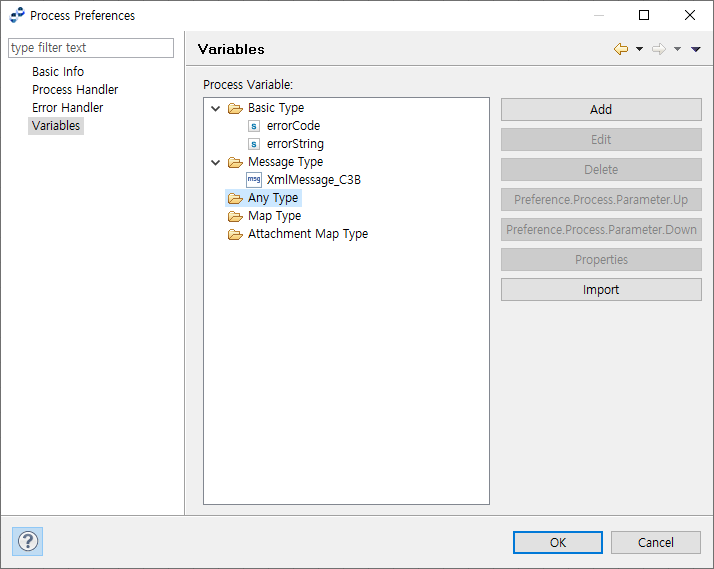
Message Event
Click [Properties] from the context menu of a Message Event in the Flow editor, and then click [Parameter Settings] from the Event Preferences window.
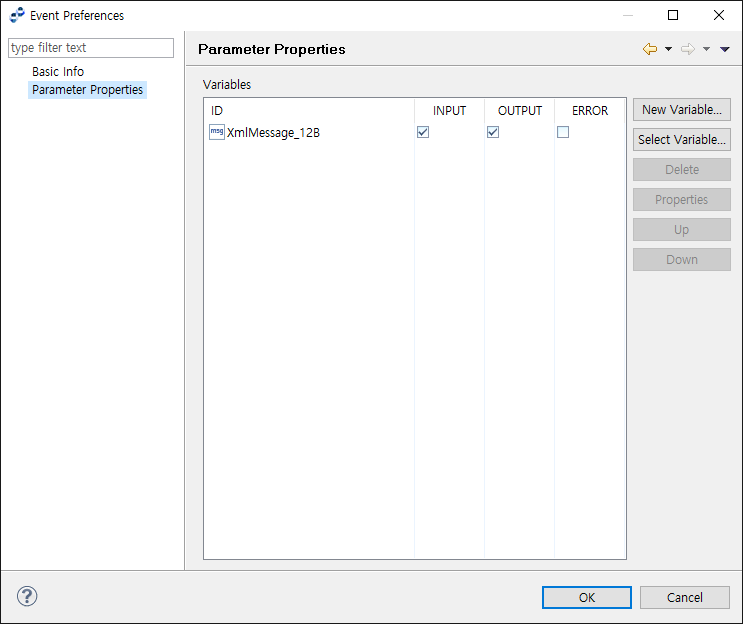
Outbound Call
Configure an outbound call as follows:
-
Select [Properties] from the WebService Activity (Outbound Call) context menu of the flow editor. Click [Parameter Settings] in the Activity Preferences window.
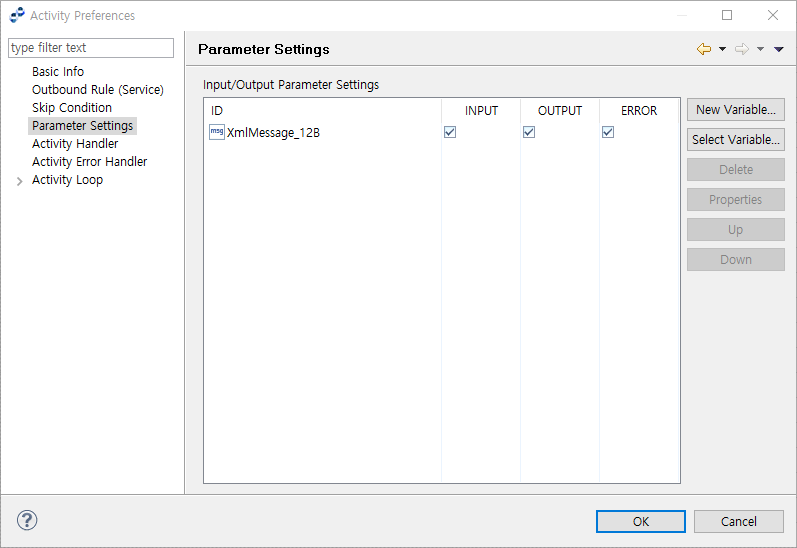 Outbound Call - Parameter Settings
Outbound Call - Parameter Settings -
Click [Outbound Rule (Service)] from the Activity Preferences window.
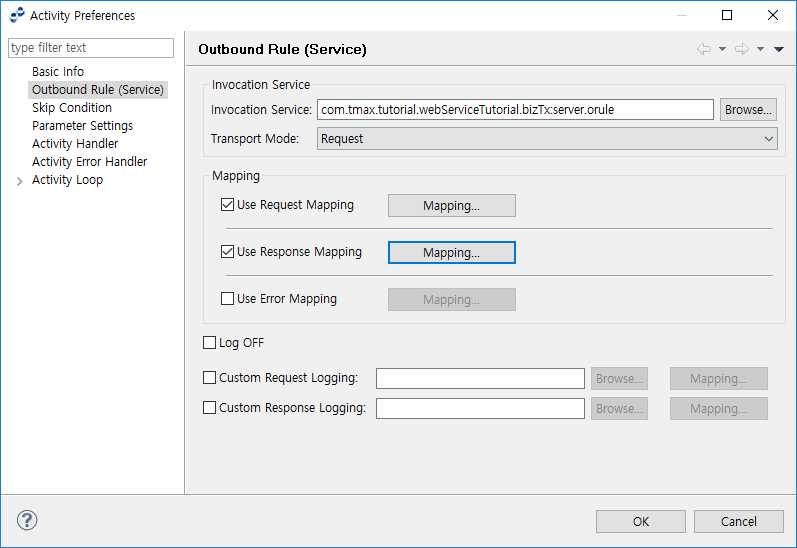 Outbound Call - Outbound Rule (Service)
Outbound Call - Outbound Rule (Service) -
Select the 'Use Request Mapping' and 'Use Response Mapping' checkboxes, and then click [Mapping] to create mappings.
 Outbound Call - Outbound Rule (Service) - Request Mapping
Outbound Call - Outbound Rule (Service) - Request Mapping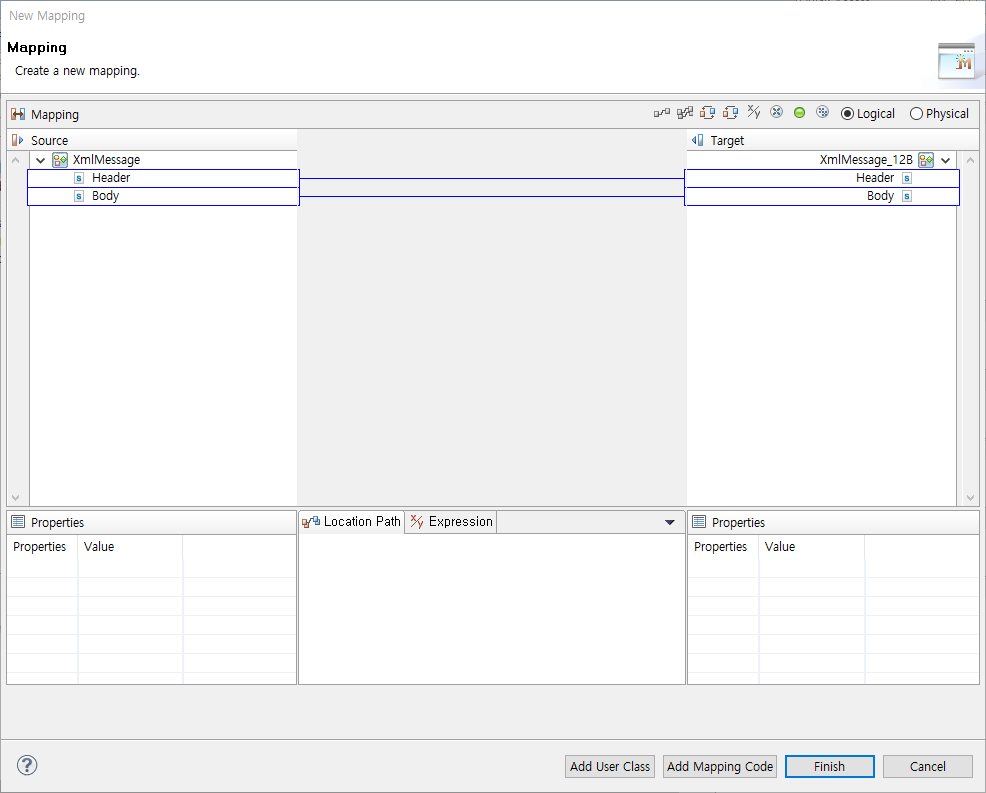 Outbound Call - Outbound Rule (Service) - Response Mapping
Outbound Call - Outbound Rule (Service) - Response Mapping
Response Call
Configure a response call as follows:
-
Select Properties from the Response Message Activity (Send Message) context menu of the flow editor. Click [Reply Message] in the Activity Preferences window.
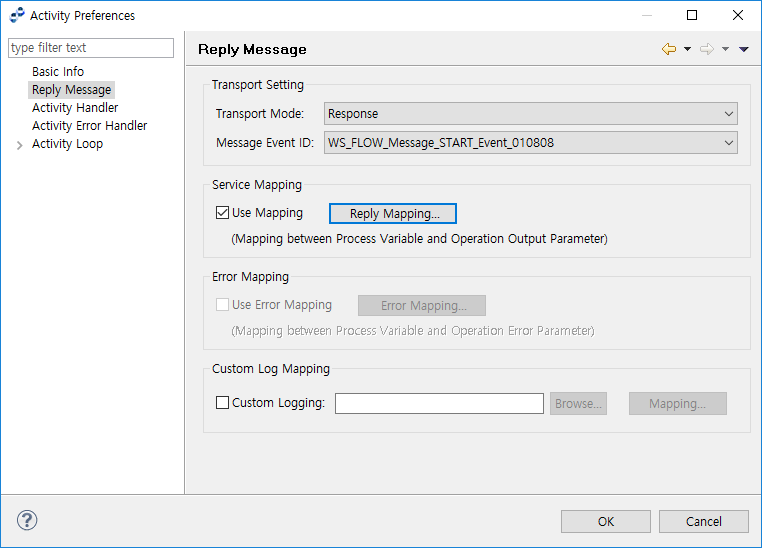 Reply Message
Reply Message -
Select the 'Service Mapping' checkbox, and then click [Reply Mapping…] to create mapping.
Click [Add Source] from the context menu of the Source section in the Mapping screen, and then select ReqInHeader, ResInHeader, and ResInBody for the mappings.
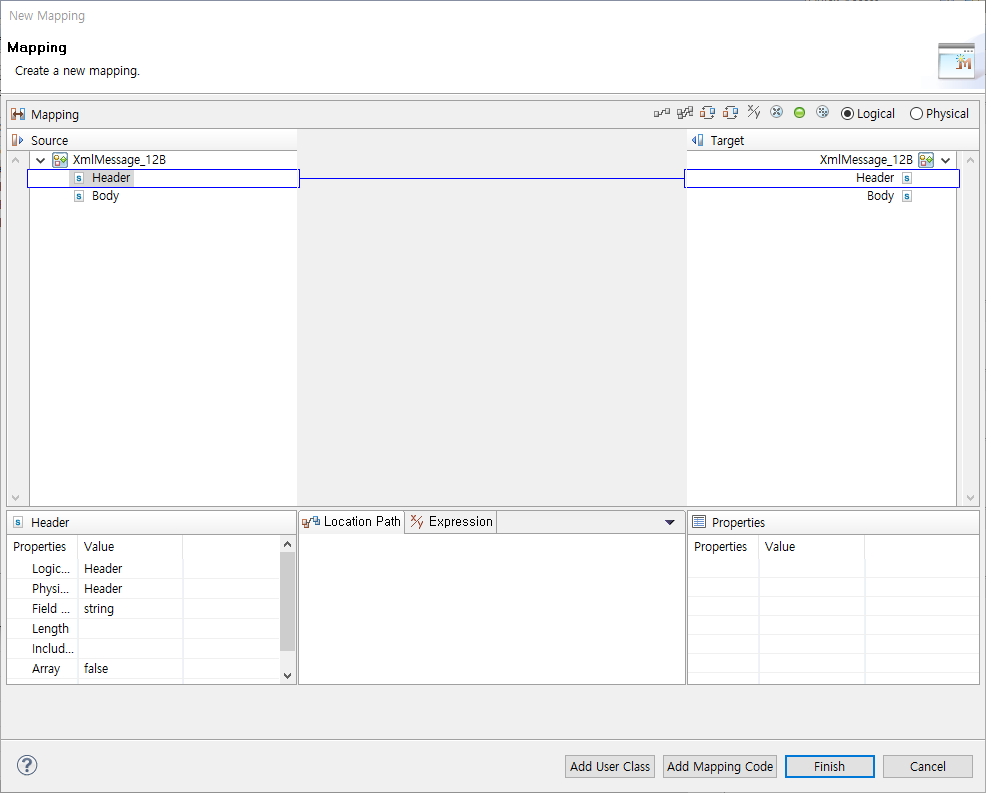 Reply Message - Service Mapping - Reply Mapping
Reply Message - Service Mapping - Reply Mapping
7. Exporting a Web Service
This section describes how to create a WSDL (which is for Web Service inbound transactions) by using the function for exporting Web Services. For more information, refer to Importing & Exporting WSDL.
Export a Web Service as follows.
-
In the BizTx Group navigator, right click on a BizTx and go to [Export].
-
Select [Export Web Service] in the [AnyLink Export] menu.
-
Select a BizTx to be used to create a Web Service.
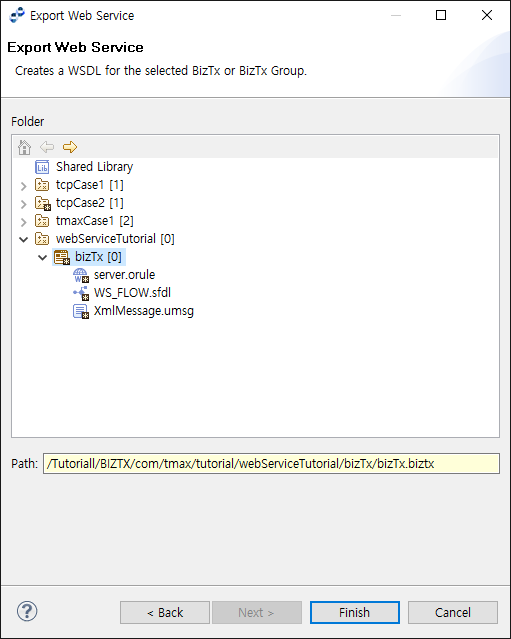 Exporting a Web Service (2)
Exporting a Web Service (2) -
ib_bizTx.wsdl will be automatically created as follow.
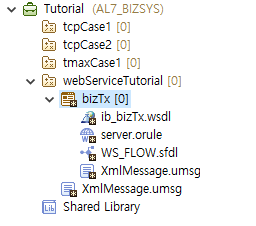 Exporting a Web Service (3)
Exporting a Web Service (3)
8. Deployment
Use the following Deploy Options window to configure deployment options for a BizTx Group/BizTx. For more information, refer to AnyLink Studio Guide.
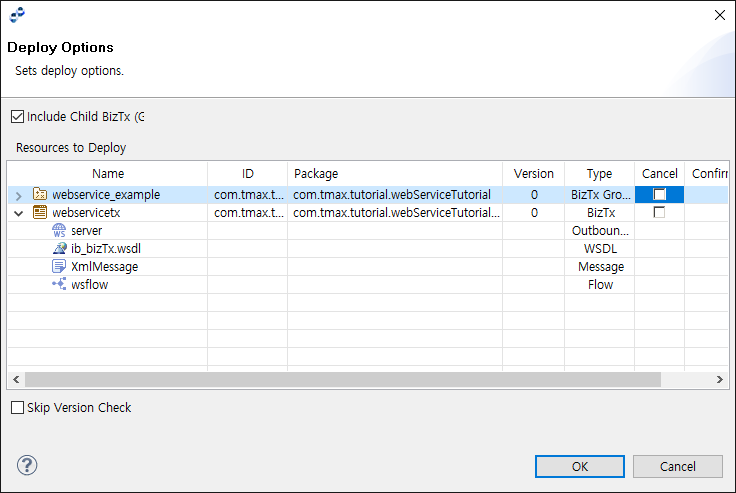
9. Testing a BizTx
Client programs use AnyLink’s outbound Web Service, and server programs use AnyLink’s inbound Web Service. The following is an example of performing a test.
